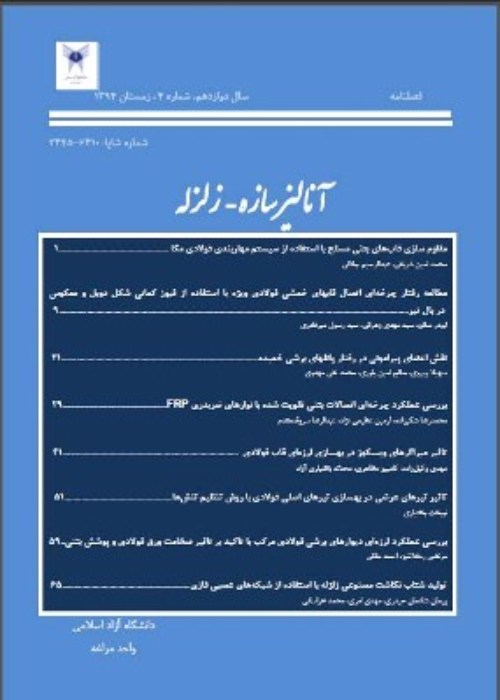Laboratory Investigation of the Pile Group Behavior in Sandy Soils under Lateral Loads
Structures are often subjected to lateral loads due to earthquakes, winds, and waves of water. It is very necessary to predict and measure the "load-deflection" behavior of the pile group, as well as its strain behavior, in order to create a safe and economical design. The behavior of piles embedded in soil, placed under the lateral load, is typically modeled and analyzed using the Winkler nonlinear springs method. In this method, the soil-pile interaction is modeled by nonlinear curves of P-Y in a way that P-Y curve modifies and adjust the single pile using a p-multiplier for each row of piles in the group. The factor depends upon the configuration of pile group and the pile spacing. The value of this factor for the leading rows are considered higher and for the trailing rows lower. The present study was conducted to investigate the effects of various parameters, such as the pile spacing in the group and different layouts on the factor. The factor obtained from this study has good compatibility with the results of the full-scale test on pile group. The results show that the value of the factor for pile groups with different layouts of 2.5-diameter pile spacing was in the range of 0.42 to 0.54, which is very close to the value of obtained by previous study.Structures are often subjected to lateral loads due to earthquakes, winds, and waves of water. It is very necessary to predict and measure the "load-deflection" behavior of the pile group, as well as its strain behavior, in order to create a safe and economical design. The behavior of piles embedded in soil, placed under the lateral load, is typically modeled and analyzed using the Winkler nonlinear springs method. In this method, the soil-pile interaction is modeled by nonlinear curves of P-Y in a way that P-Y curve modifies and adjust the single pile using a p-multiplier for each row of piles in the group. The factor depends upon the configuration of pile group and the pile spacing. The value of this factor for the leading rows are considered higher and for the trailing rows lower. The present study was conducted to investigate the effects of various parameters, such as the pile spacing in the group and different layouts on the factor. The factor obtained from this study has good compatibility with the results of the full-scale test on pile group. The results show that the value of the factor for pile groups with different layouts of 2.5-diameter pile spacing was in the range of 0.42 to 0.54, which is very close to the value of obtained by previous study.
- حق عضویت دریافتی صرف حمایت از نشریات عضو و نگهداری، تکمیل و توسعه مگیران میشود.
- پرداخت حق اشتراک و دانلود مقالات اجازه بازنشر آن در سایر رسانههای چاپی و دیجیتال را به کاربر نمیدهد.



